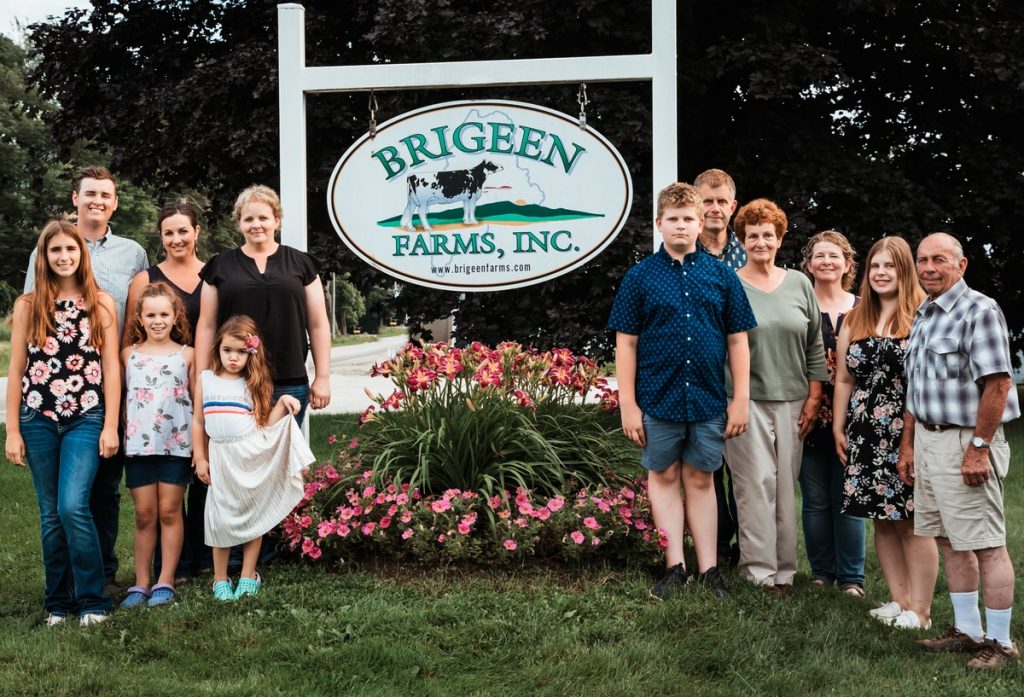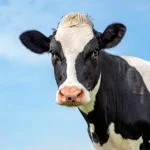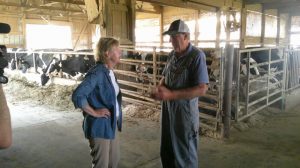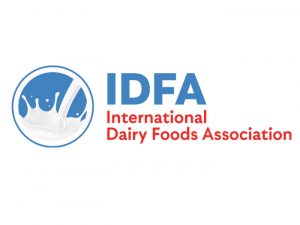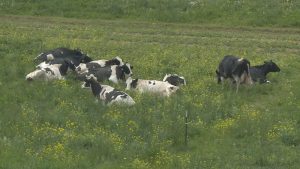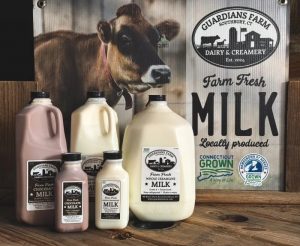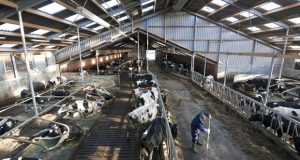
When members of the 11th generation of dairy farmers take over Brigeen Farms in Turner, they will have 10 times as many cows to milk as their parents did.
Commercial dairies in Maine don’t have it easy: At least a third have closed since 2020, and five have shuttered since April alone. Higher costs, changing consumer demand, milk prices that don’t keep up with rising costs and a smaller rural workforce all put pressure on small farmers.
Brigeen Farms, in operation since 1777, is weathering those factors by adding more cows and modernizing their milking. Farmers Betsy and Bill Bullard have grown their herd from 65 to 580 milking cows in the past two decades and plan to add 120 in the coming years. With a recent grant, they’re upgrading their operation and preparing to add a robotic milking system.
Modernizing the farm and growing the herd will spread high costs across more cows, reaching efficiencies of scale and requiring less labor. Getting bigger isn’t the solution for every Maine dairy, but it’s one way the state’s iconic and economically important farms can prepare for the future.
More cows can bring in more income and let farmers operate with “economies of scale,” which means cost per animal drops when spread out over a larger herd. Dairies are getting bigger overall in the U.S., often consolidating, for similar reasons.
Maine’s largest commercial dairy farm, Flood Brothers in Clinton, milks about 1,800 cows. The average herd size in the state in 2022 was 70 cows. An average herd had 2,300 animals in California, the country’s largest dairy producing state, USDA data shows.
Brigeen Farms is the eighth largest commercial dairy farm in Maine, according to the state’s Department of Agriculture, Conservation and Forestry. It sold 16.1 million pounds of milk in 2023, most of which was processed at Oakhurst in Portland and sold in-state.
For the Bullards, economies of scale apply to purchases like feed and cleaning solution for the milk lines, along with making investments in newer, more efficient equipment and other changes.

Their farm infrastructure was last meaningfully updated in the 1950s, and they want to modernize it to run more efficiently.
“We’ve made things work through Yankee ingenuity and duct tape and baler twine, but as we look to the future, we would certainly like to simplify,” Betsy Bullard said.
They’ll do some of that with a $65,000 matching grant they won from the Maine Farmland Trust in October. It came after participating in the nonprofit’s two-year “Farming for the Long Haul” business planning program.
The farmers will expand their milk storage so that they can have more flexibility with wait times for the trucks that pick up their milk for processing. They will also change the layout of their milking area and pickup location to reduce labor and make it easier for the team to do different jobs.
They’ve studied adding a robotic milking system to save time and labor. There are only two of these in Maine right now; The University of Maine’s Witter Farm is installing the third, which is expected to open next spring. It represents the future of the dairy industry, the system said in an October press release.
Wth a robotic milking system, cows essentially decide when they want to be milked. They often return to the robots throughout the day, meaning they yield more milk than with one or two set milking times. The robotic system also records data about production and animal nutrition that farmers can use to help manage their herds.
Robotic systems are more common in other states, but Maine didn’t have a company that could service them until recently, said Sarah Littlefield, who works with the state’s 140 commercial dairies as executive director of the Maine Dairy Promotion Board.
Brigeen Farms also hopes the advanced machinery will help them attract employees, offsetting another challenge dairy farmers are facing, Bullard said.
Some of the Maine dairy farms that closed in recent years cited higher labor costs and fewer available workers combined with lower milk prices as a major factor.
Making updates like these are big investments typically financed with loans, according to Bullard. With grant funds, they can start projects and see financial benefits from them sooner.
They’ve also diversified, another common survival strategy for farms. The family has a small compost business and opened Canty Cow Creamery, making frozen custard to sell onsite and at local farm stores. It’s a small part of their operation, Bullard said, but it is always nice to share a cone with a farm visitor.
Scaling up isn’t the secret to survival for every Maine dairy farm. Here, farms are family businesses, and what’s possible or desirable is different for every family, Bullard said.
For example, one farm might want to produce more milk, another could want to pass the farm to another generation and a third may want to sell it, according to Littlefield. They might have different debt loads to offset or different streams of income, such as growing hay, marketing cow genetics or selling to a methane digester.
Houlton Farms Dairy, another multigenerational Maine operation, stopped selling liquid milk in September to focus on ice cream and butter to survive.
Farms are smaller in Maine too, and land a more limited resource. Brigeen Farms doesn’t have the land or resources to grow beyond 700 milking cows.
Scaling up isn’t the secret to survival for every Maine dairy farm. Here, farms are family businesses, and what’s possible or desirable is different for every family, Bullard said.
For example, one farm might want to produce more milk, another could want to pass the farm to another generation and a third may want to sell it, according to Littlefield. They might have different debt loads to offset or different streams of income, such as growing hay, marketing cow genetics or selling to a methane digester.
Houlton Farms Dairy, another multigenerational Maine operation, stopped selling liquid milk in September to focus on ice cream and butter to survive.
Farms are smaller in Maine too, and land a more limited resource. Brigeen Farms doesn’t have the land or resources to grow beyond 700 milking cows.
You can now read the most important #news on #eDairyNews #Whatsapp channels!!!
🇺🇸 eDairy News INGLÊS: https://whatsapp.com/channel/0029VaKsjzGDTkJyIN6hcP1K
